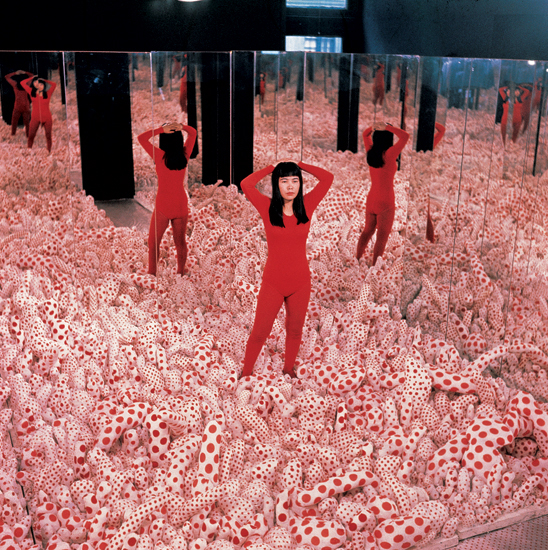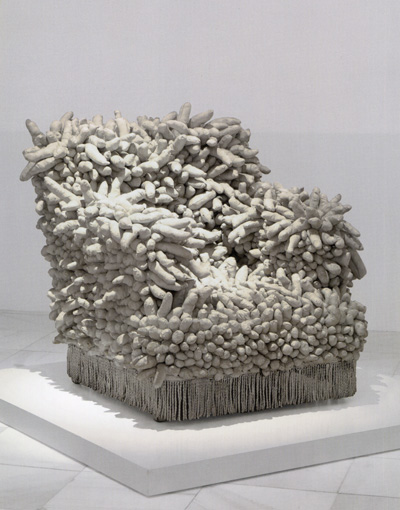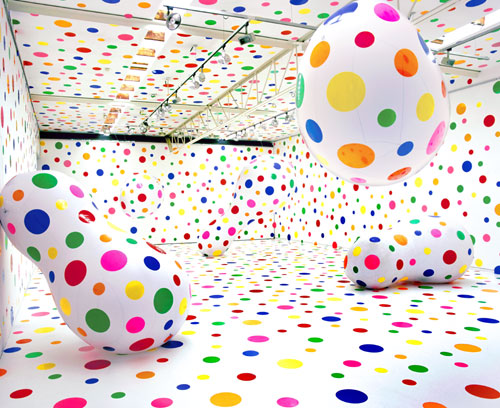I grew up near the Whitney Museum on 75th street
and attended the Biennial since I was a small child. As you can imagine, I
understood little. My parents love telling the story of how, in the
installation set up like a kitchen/dining area that had been destroyed by the
artist, I responded, "What a mess!" Things changed in 2004, when I
was ten. I stepped into Yayoi Kusama's Fireflies On The Water, and began to understand what art was all
about. The few moments I had to myself in that room were the closest to magic I
had ever come. I understood genius for the first time, and asked myself a
question I would continue to ask myself every time I saw a brilliant art piece
for the rest of my life: “How the fuck did he/she come up with that?”
I was not yet at an age where I knew to go home
and conduct an extensive study of the artist. In fact, I promptly forgot the
artist’s name. All I had was that image of the infinite lights over the water,
the feeling of being suspended in outer space, alone with my own quiet reflection.
Two summers ago, Fireflies On The Water returned to the Whitney in a Yayoi Kusama
retrospective. I didn’t mind that the wait was too long to see it again;
Kusama’s other work was so beautiful that the one experience was all I needed.
The exhibit was life-changing. Here,
I thought, is one woman who truly gets
how I feel.
Our artwork doesn’t look similar aside from the
fact that we are both afraid of phalli, for reasons I won’t describe here. A
past TA once told me the recipe to creating great art was to make something
giant. If you can’t make it giant, make it small and repeat it as many times as
you can. If you can’t repeat it, paint it red. The best is to do all three. In
order to portray her fear of phalli, I think she tended towards the “repeat” and
“red” category, whereas I tend towards the “make it big” (or at least four feet tall) category.

What I also find seducing about Kusama is that
she has struggled with mental illness her entire life. She has had
hallucinations and panic attacks as long as she can remember, which have
informed much of her work. As a synesthete and (not jokingly) crazy
person (I also won’t go into this here), it is comforting to know that the
things I see can be turned into something mesmerizing and beautiful, or so
unsettling that we are forced to call it beautiful.
There are certain aspects of her work that I
feel like I only understand because I am part Japanese. Her parents tended a
seedling nursery and you can see how the young plants infested her
imagination like parasites.
There is something sterile about Japanese culture
that ultimately is a breeding ground for fears of contamination and infection.
My mother was always a “germophobe” and I have been very “OCD” about germs my
entire life. The thought that I could be touching something gross gave me a gut-wrenching visceral reaction. A lot of the time I have to repress my feelings of disgust and fear of contamination. (Compare my sculpture with what a germ looks like under a microscope...)
Kusama’s obsession with contamination and spread
is somehow linked to her fear of phalli and thus sex. The phalli grow from her
furniture like an overgrown garden, and her Infinity Nets spread out like an
explosion of seeds.
There is much of her work that I don’t
necessarily connect with as much, such as her performance art pieces. We
certainly aren’t the same person, and we live in very different times. Still,
when I think of which artist inspires me the most, and which one I want to be
most like, I always think of Yayoi Kusama first.









No comments:
Post a Comment